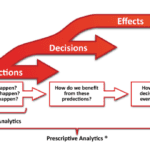What are chatbots, and how do they work
Chatbots are computer programs that are designed to simulate human conversation. The term “chatbot” comes from the combination of “chat” and “robot.” Chatbots are commonly used in online customer service to quickly and efficiently resolve customer issues. In most cases, chatbots are powered by artificial intelligence (AI) and natural language processing (NLP) technology. This allows them to understand human speech and respond in a way that simulates human conversation. Chatbots can be deployed on various platforms, including websites, social media, messaging apps, and even phone systems. Chatbot technology is constantly evolving, and new chatbots are continually being developed. As chatbots become more advanced, they will likely become even more common in customer service and other fields.
Machine Learning in Customer Service
Machine learning allows companies to use algorithms that can analyze past customer interactions, identify patterns in customer behavior, and predict future needs and preferences. This enables companies to provide more personalized customer support experiences, better anticipate customer needs, and provide faster resolution times.
In addition to using machine learning for predictive analysis, it can also be used in process automation. For example, companies can use algorithms to automate mundane tasks like ticket routing or gathering data from customers. This allows customer service representatives to focus on more complex tasks that require their expertise and attention.
Machine learning can also help gather customer feedback. For example, companies can use algorithms to analyze customer interactions and identify areas that might need improvements, such as response times or quality of service. This helps companies make more informed decisions about optimizing their customer support process.
Overall, machine learning has the potential to revolutionize the way companies approach customer service.
Machine learning is an application of artificial intelligence that allows systems to learn and improve from experience without being explicitly programmed automatically. Instead, machine Learning algorithms use data to build models that predict future outcomes based on known patterns. It enables computers to learn from past experiences, adjust to new inputs and perform complex tasks such as facial recognition or natural language processing. Machine learning is used in many applications, from helping diagnose medical conditions and recommend the best treatments to self-driving cars. By leveraging large datasets, machine learning has outperformed humans in some tasks while providing insights into data that would otherwise be too complex or expensive for humans to analyze.
The benefits of using machine learning chatbots
In today’s fast-paced world, finding the time to talk to a human customer service representative cannot be easy. Chatbots offer a convenient solution, providing quick answers to common questions 24/7. But what are chatbots, and how do they work? Chatbots are computer programs that mimic human conversation. Natural language processing and machine learning algorithms are designed to understand the user’s needs and respond appropriately. The benefits of using chatbots include improved customer satisfaction, reduced costs, and faster resolutions. In addition, chatbots can help collect data about customer interactions, which can be used to improve the customer experience. As more businesses adopt this technology, chatbots will likely become essential to the customer service landscape.
How to create a chatbot for your business
Chatbots are computer programs that mimic human conversation. They can be used to automate customer service or sales tasks, making it easier and faster for customers to get the information they need. Chatbot solutions also give customers valuable insights into their relationship with a company. By analyzing customer conversations, chatbots can detect patterns and identify areas for improvement. This data can then inform customer service strategies, helping companies better serve their customers.
To create a chatbot for your business, you must determine its purpose. Will it be used to answer common customer questions? Facilitate transactions? or provide support during an interaction? Once you have a clear idea of its purpose, you must choose a chatbot platform. Many different platforms are available, so do your research before deciding. Once you are finished with preparations, you must design and build your chatbot. This process will involve creating dialogue trees and developing responses for common user queries. Finally, you must test your chatbot to ensure it functions correctly. Follow these steps, and you’ll be on your way to creating a successful chatbot for your business. There are lost multiple ready-to-use solutions available on the market.
The future of chatbots and machine learning
As anyone who has ever used a chatbot knows, they are far from perfect. Frequently, they need help understanding natural language and providing coherent or accurate responses. However, chatbots are constantly evolving, and the future of chatbots lies in machine learning. Machine-learning algorithms allow chatbots to improve their understanding of human conversation gradually. In addition, machine learning can also be used to develop more natural-sounding responses and to customize the chatbot experience for each user. As chatbots evolve, they will become increasingly valuable tools for businesses and consumers.
Chatbots are becoming increasingly popular as businesses discover the many benefits they offer. If you need to start using chatbots in your marketing, now is the time. We can help you create a chatbot for your business that will help you increase sales and customer satisfaction. With machine-learning chatbots, the future of customer service looks bright.











